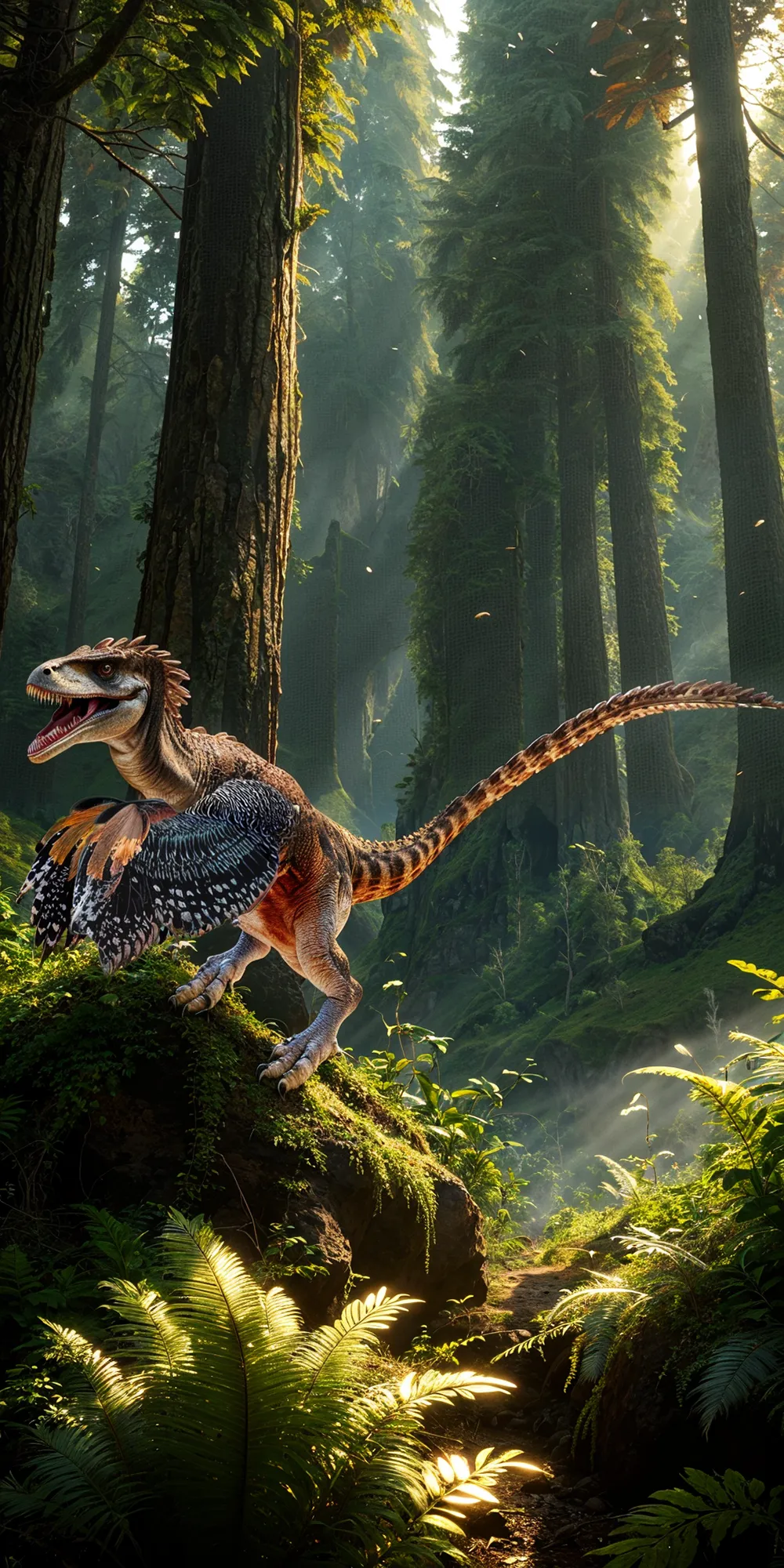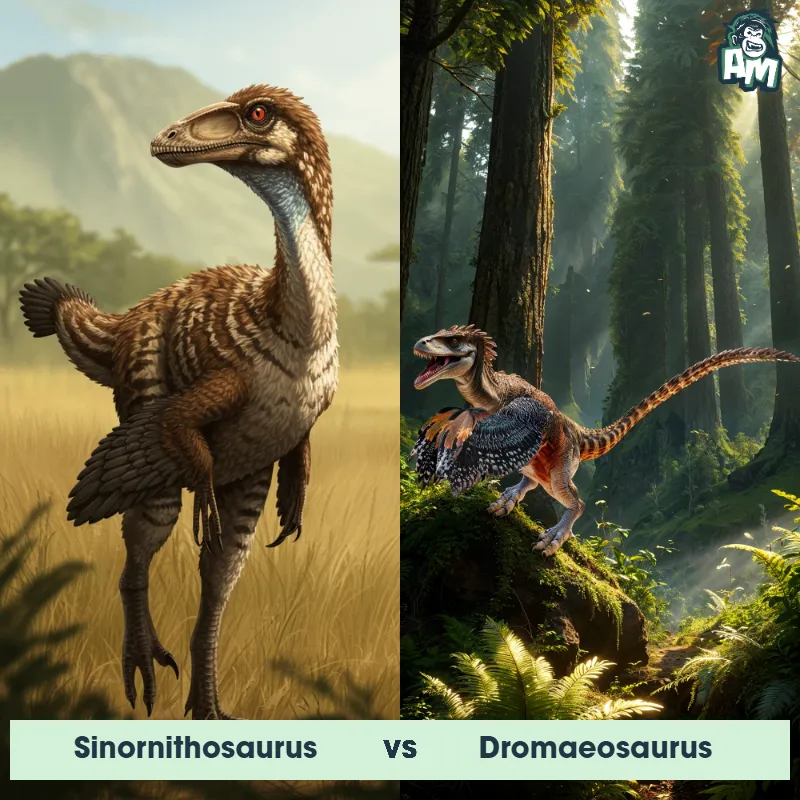The Dromaeosaurus
Dromaeosaurus, also known as the "running lizard," was a carnivorous dinosaur that lived during the Late Cretaceous period. It was a bipedal predator with sharp teeth, a long tail, and a sickle-shaped claw on each foot, which it used to capture its prey. Dromaeosaurus had a sleek, feathered body and was a fast and agile hunter.

| Dromaeosaurus | |
|---|---|
| Size | Around 6 feet (1.8 meters) in length |
| Weight | Approximately 150 pounds (68 kilograms) |
| Speed | 30mph (48km/h) |
| Key Strength | Speed and agility |
| Biggest Weakness | Size and strength |
| Scientific Name | Dromaeosaurus |
| Family | Dromaeosauridae |
| Habitat | Terrestrial |
| Geography | North America |
| Diet | Carnivorous |
| Lifespan | 10 years - 15 years |

The Dromaeosaurus
Dromaeosaurus, also known as the "running lizard," was a carnivorous dinosaur that lived during the Late Cretaceous period. It was a bipedal predator with sharp teeth, a long tail, and a sickle-shaped claw on each foot, which it used to capture its prey. Dromaeosaurus had a sleek, feathered body and was a fast and agile hunter.
Fun Fact: Dromaeosaurus had excellent binocular vision, which allowed it to accurately judge distances and track prey during hunts.
| Dromaeosaurus | |
|---|---|
| Size | Around 6 feet (1.8 meters) in length |
| Weight | Approximately 150 pounds (68 kilograms) |
| Speed | 30mph (48km/h) |
| Key Strength | Speed and agility |
| Biggest Weakness | Size and strength |
| Scientific Name | Dromaeosaurus |
| Family | Dromaeosauridae |
| Habitat | Terrestrial |
| Geography | North America |
| Diet | Carnivorous |
| Lifespan | 10 years - 15 years |
Dromaeosaurus Matchups
We use AI to simulate matchups between the Dromaeosaurus and other animals. Our simulation considers size, strength, and natural predatory behaviors to determine the most likely outcome.

Can't find the Matchup you want?
Create Your Own MatchupDromaeosaurus: Diet, Predators, Aggression, and Defensive Behaviors
What did Dromaeosaurus eat?
Dromaeosaurus were carnivorous dinosaurs that primarily fed on small- to medium-sized prey. Fossil evidence suggests that they may have hunted animals such as mammals, reptiles, and possibly other dinosaurs. They were agile hunters known for their sharp teeth and retractable claws, which they used to catch and kill their prey.
Did Dromaeosaurus have any predators?
As top predators in their ecosystems during the Late Cretaceous period, Dromaeosaurus likely had few natural predators. However, larger carnivorous dinosaurs like Tyrannosaurus rex may have posed a threat to them. Additionally, they may have faced competition from other predatory dinosaurs for food sources.
Were Dromaeosaurus aggressive?
Dromaeosaurus were likely aggressive predators, known for their speed, agility, and hunting skills. They may have exhibited territorial behavior, especially when competing with other predators for resources. Their sharp claws and teeth were well-suited for capturing prey and defending their territory.
Did Dromaeosaurus fight?
Dromaeosaurus may have engaged in intra-species competition or territorial disputes, leading to physical confrontations with other individuals of their kind. Fossil evidence suggests that they may have used their claws and teeth as weapons during fights, displaying aggressive behavior to establish dominance within their social groups.
How did Dromaeosaurus defend themselves?
Dromaeosaurus likely relied on their speed, agility, and sharp claws to defend themselves against potential threats. They may have used their claws for slashing and their teeth for biting in self-defense. Additionally, their pack-hunting behavior may have provided them with a collective defense mechanism against larger predators.
What was Dromaeosaurus' biggest weakness in a fight?
Despite their formidable hunting abilities, Dromaeosaurus may have been vulnerable during confrontations with larger or more powerful predators. Their relatively small size compared to some other carnivorous dinosaurs, such as Tyrannosaurus rex, could have been a significant weakness in a fight. Additionally, their pack-hunting strategy may have been less effective when facing solitary, apex predators.
Fun Fact: One interesting fact about Dromaeosaurus is that it is believed to have been a social animal, living and hunting in packs to take down larger prey.
Fun Fact: Dromaeosaurus had a keen sense of smell, which would have helped it locate food sources over long distances.











